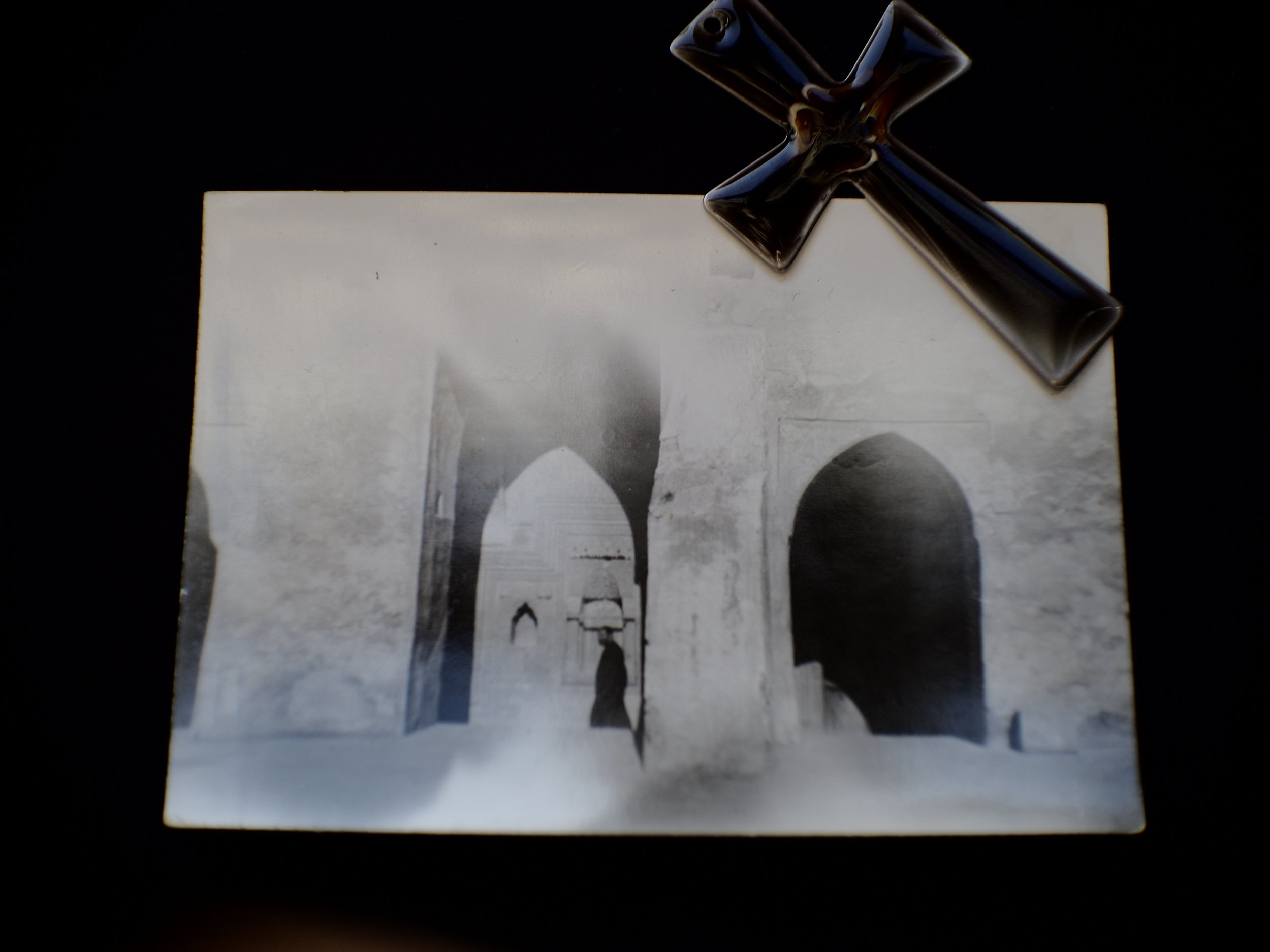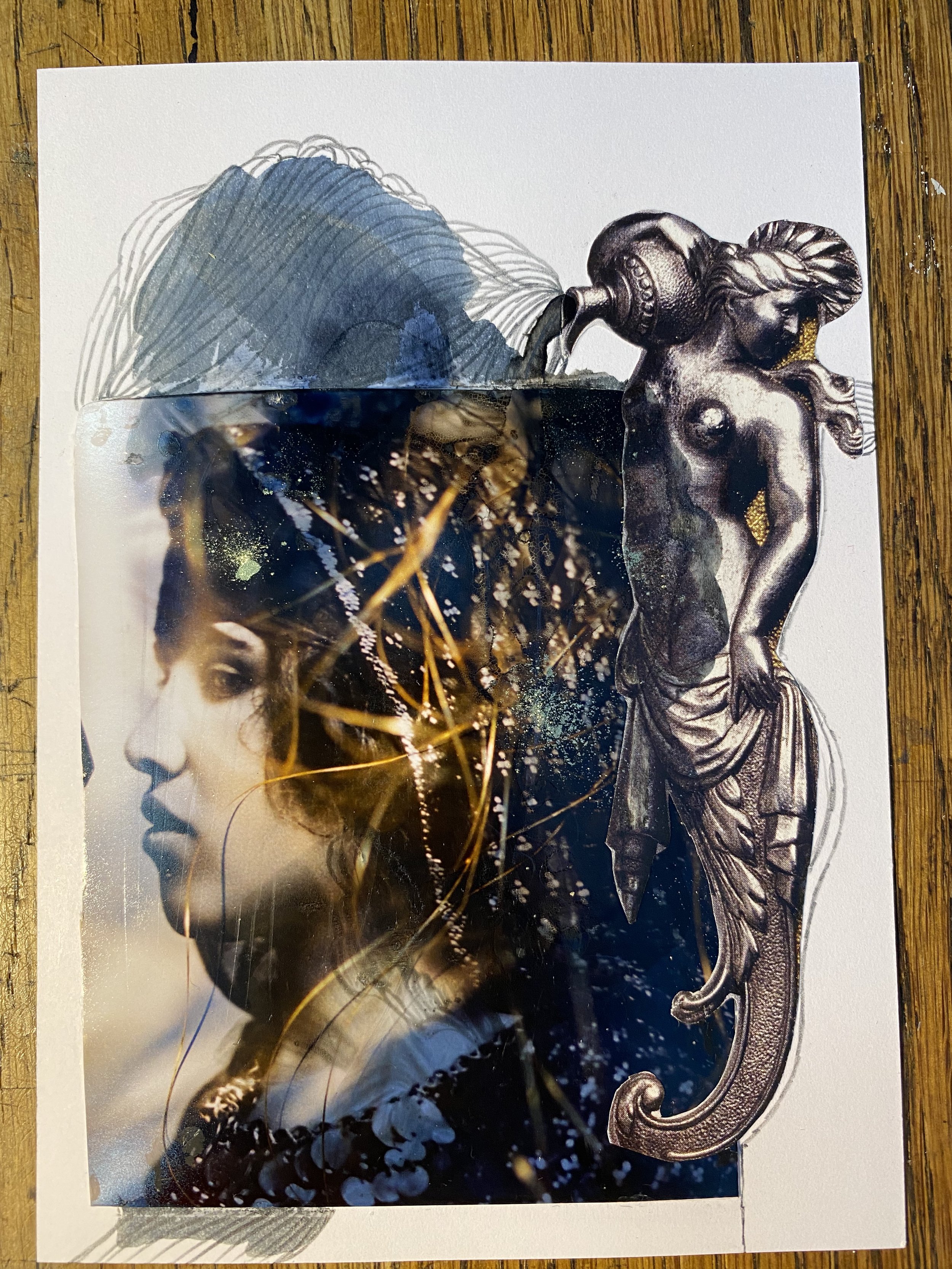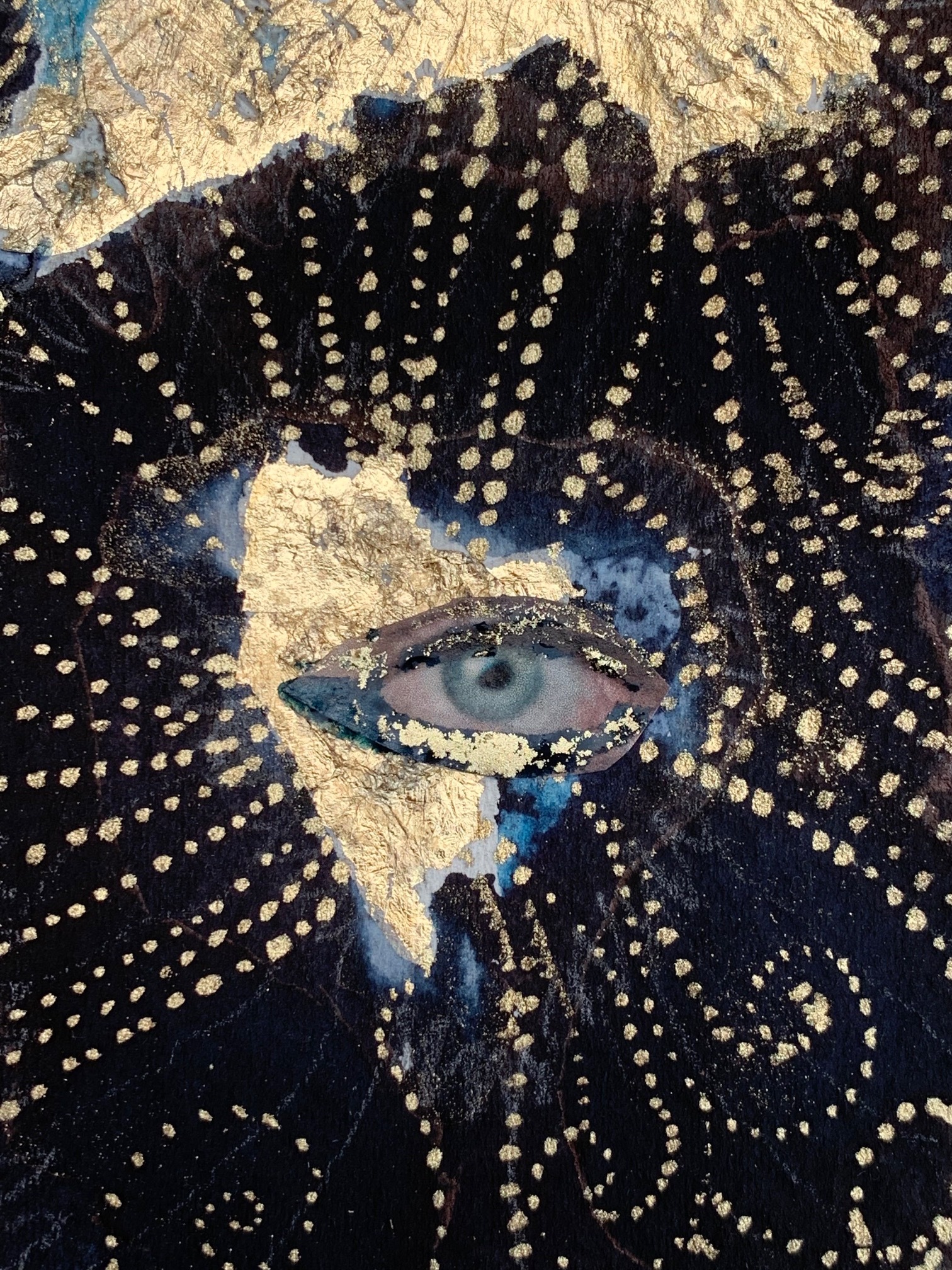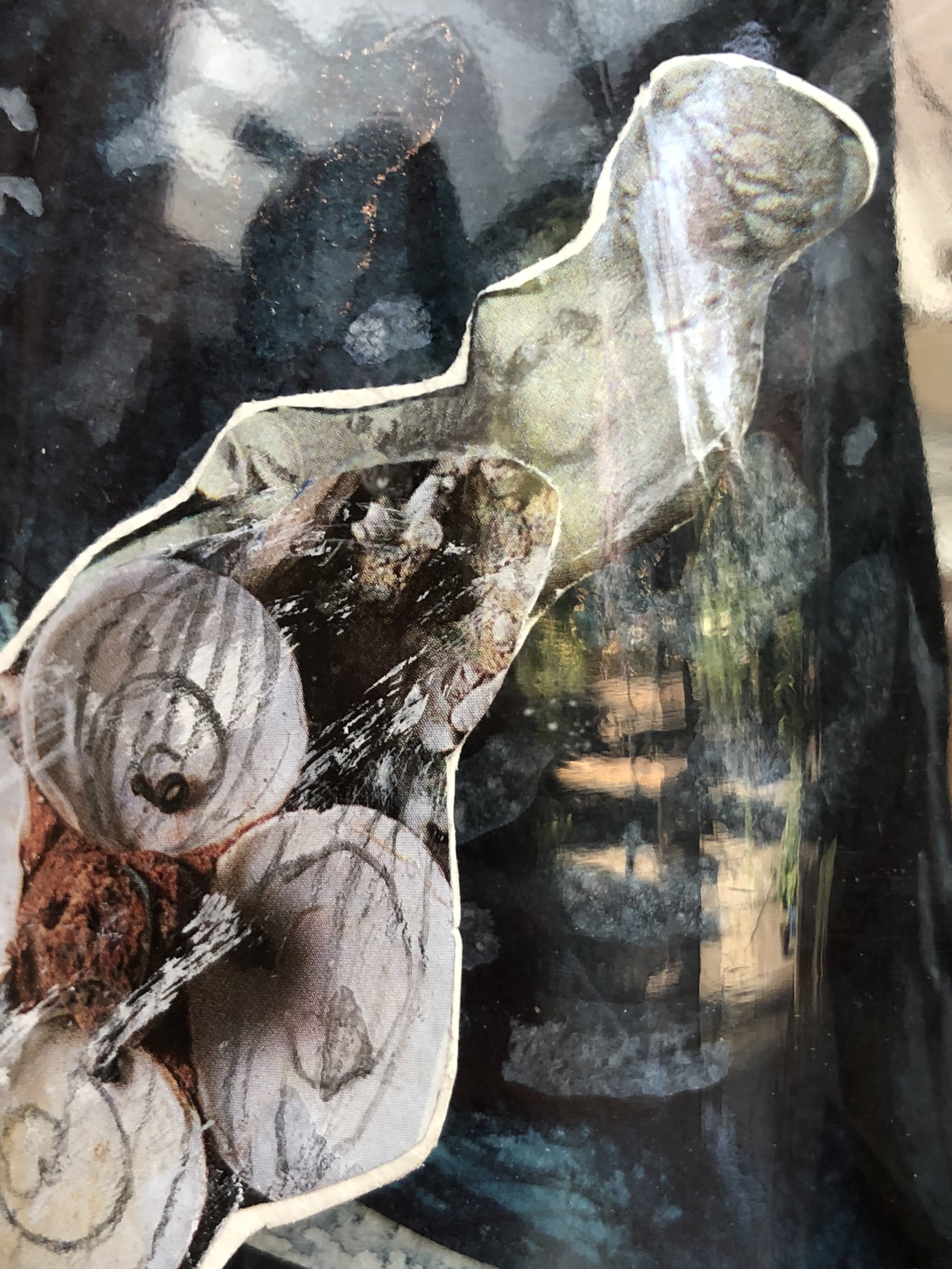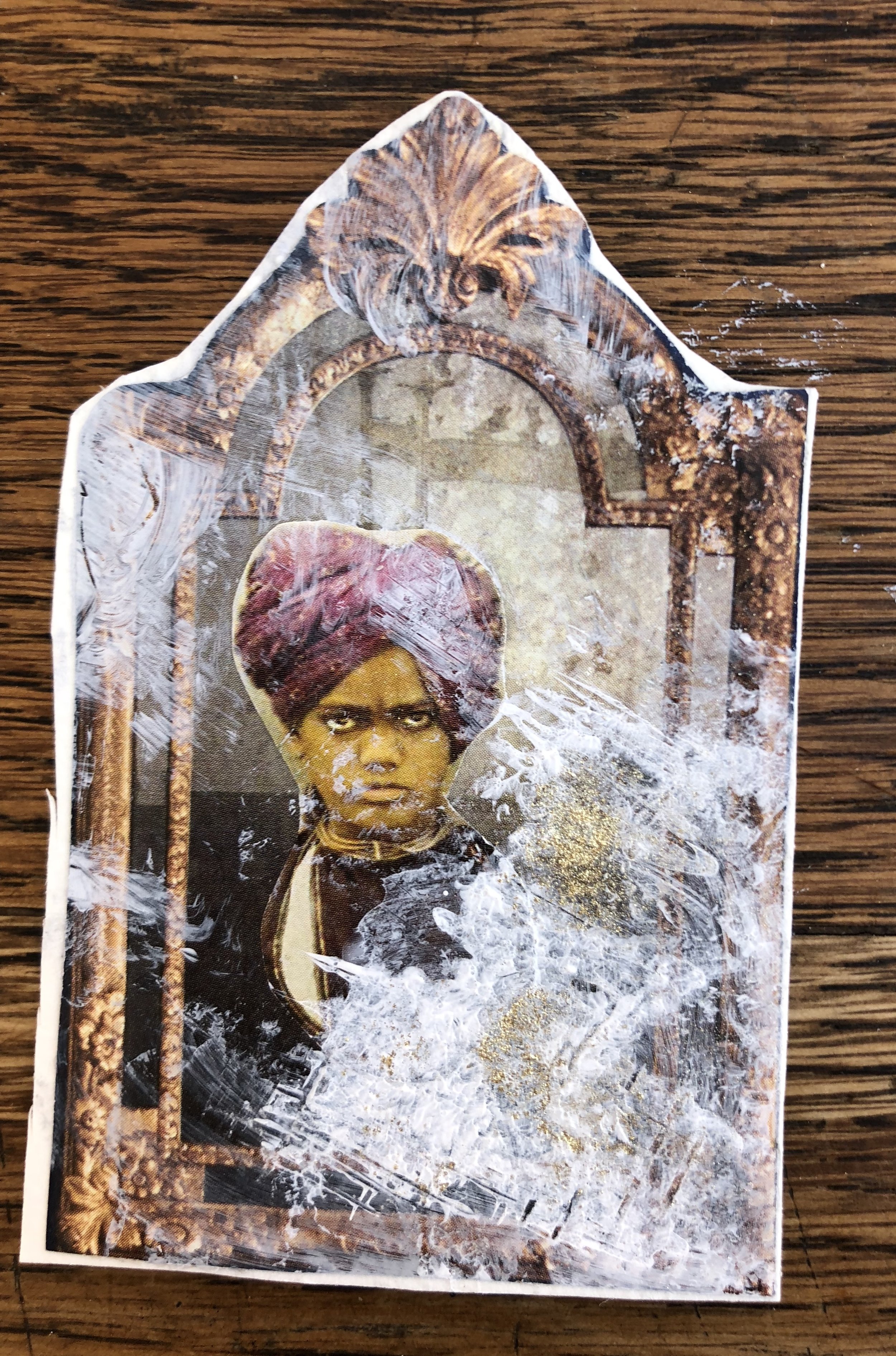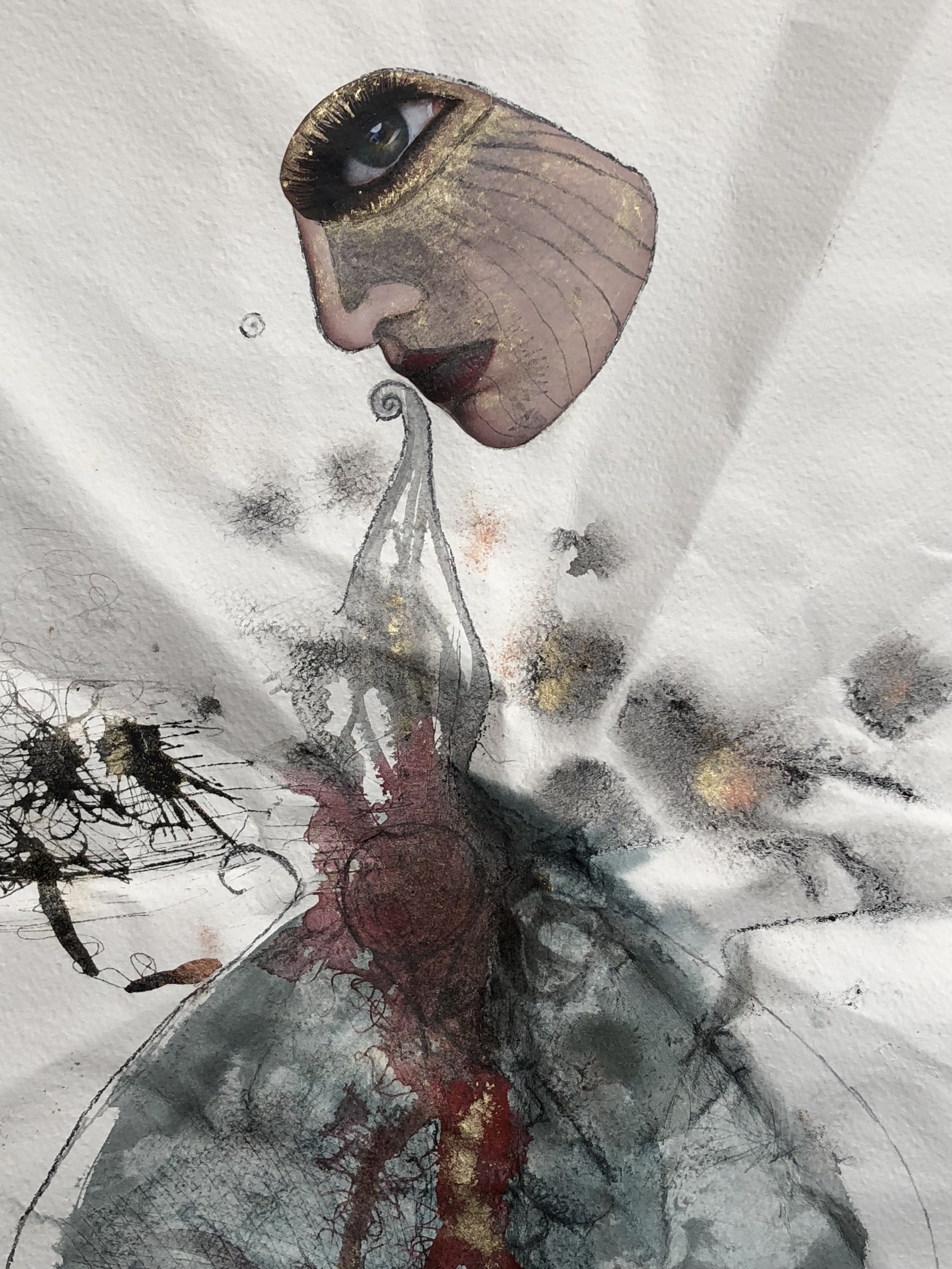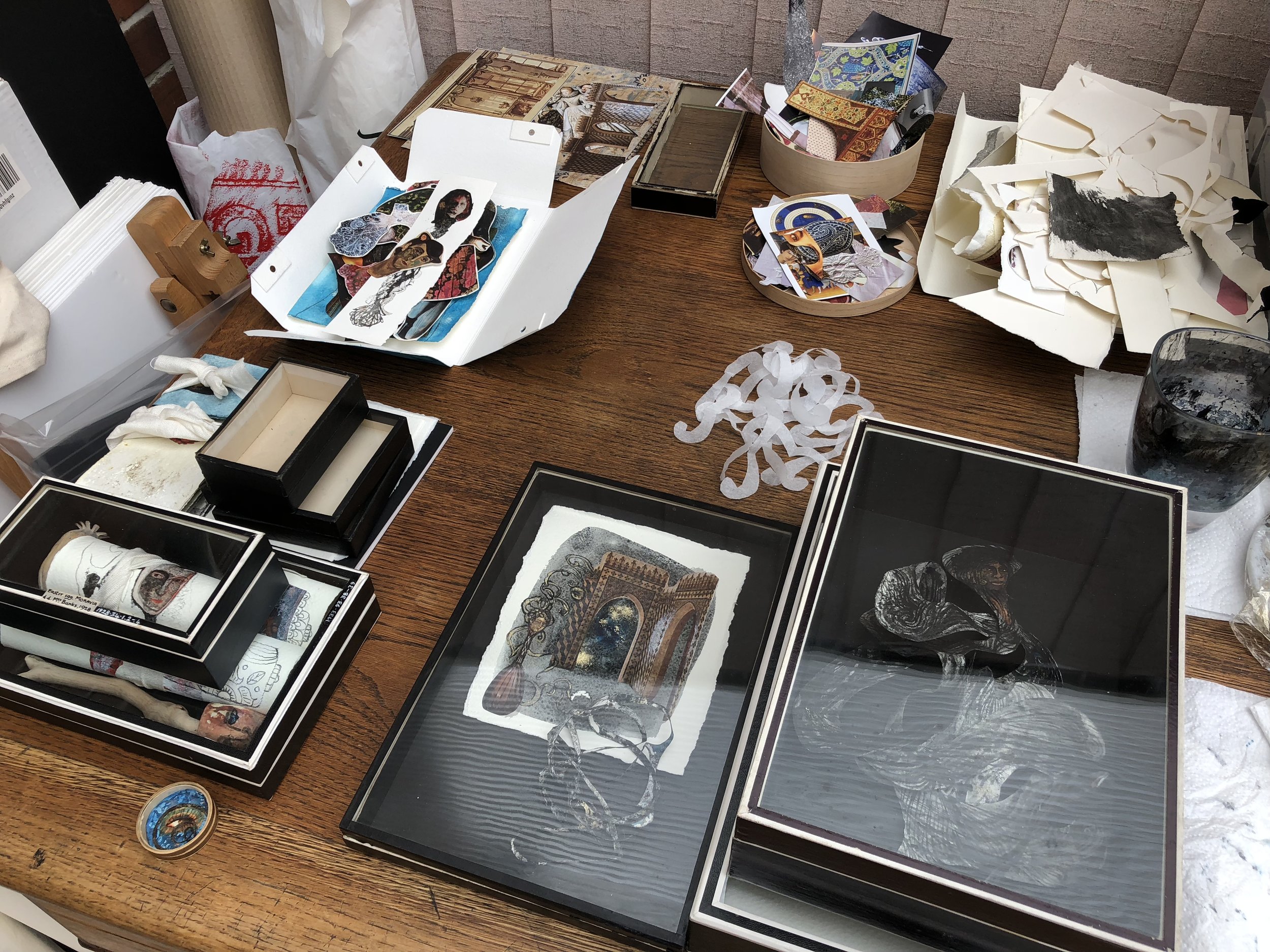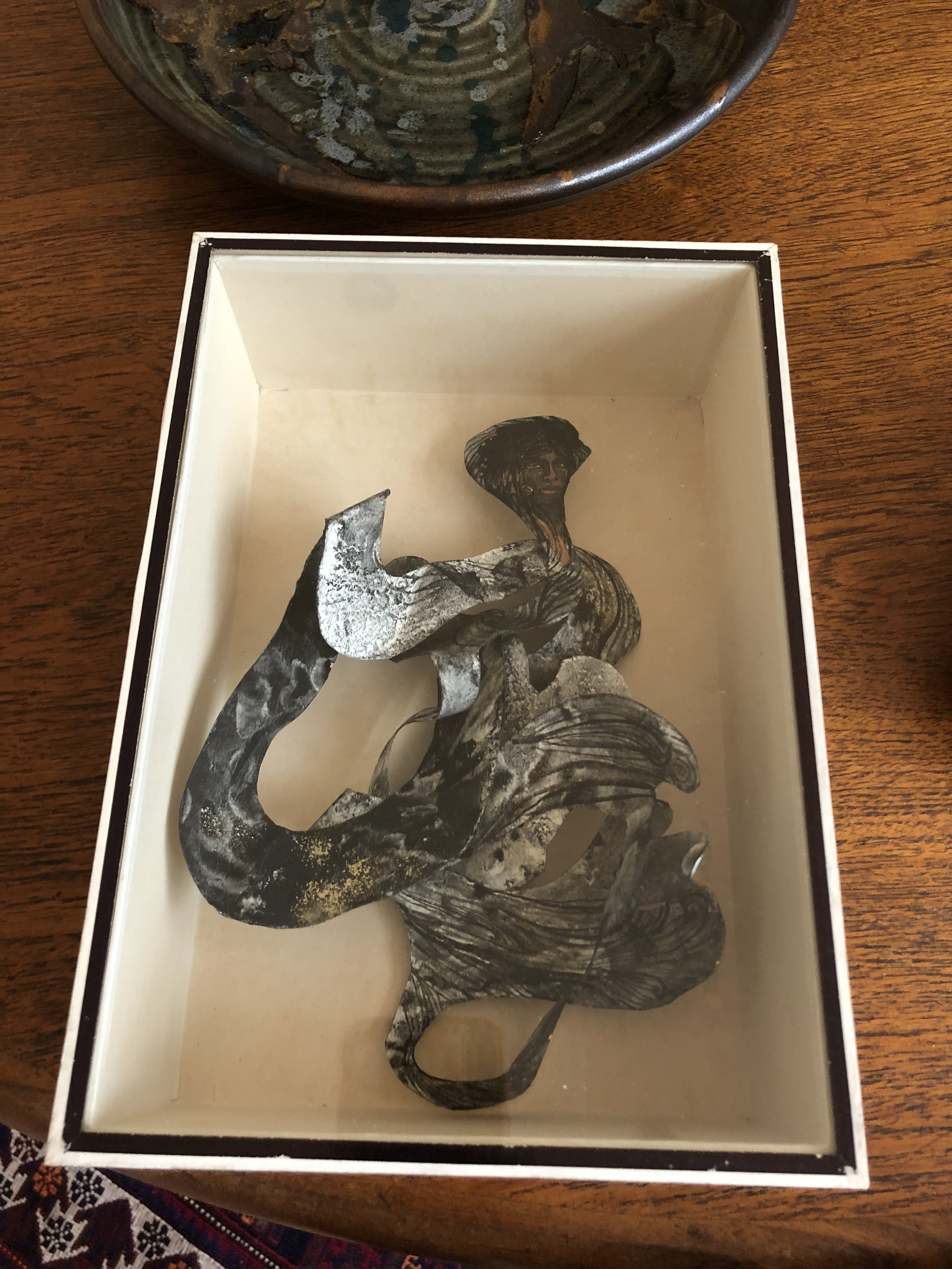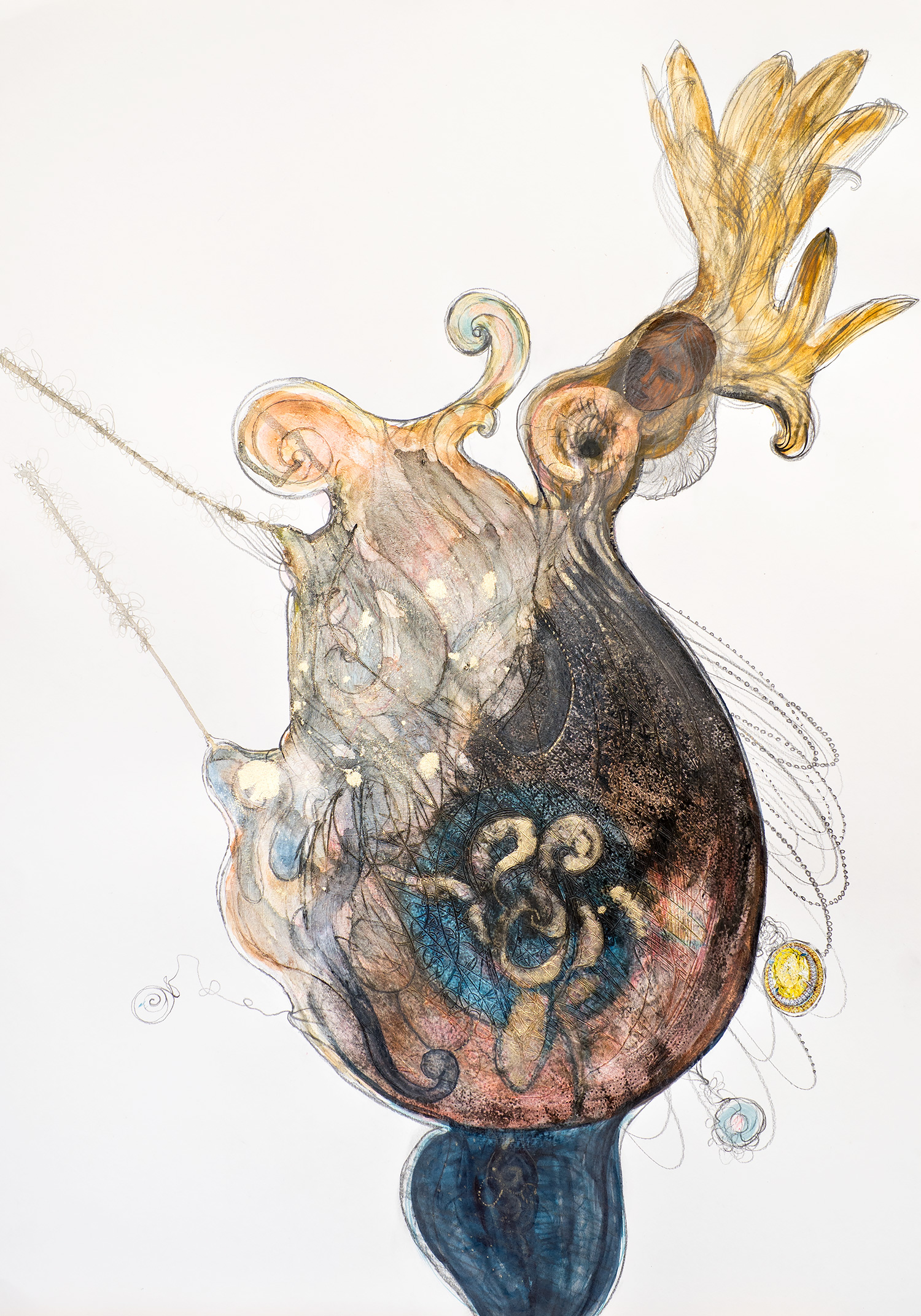22nd September - 4th October 2022 Making The Postcard Women’s Imaginarium II: THEN ; NOW ; ? - Jewels, dreams and songs of our futures
An exhibition at Camden Image gallery as part of a multi - partner project curated and led by Salma Ahmad Caller, funded by Arts Council England, supported by The Mixed Museum, The Arab British Centre, The Zay Initiative and Peculiarity Press. Including a online permanent exhibition with The Mixed Museum called Out of the East into the West
https://mixedmuseum.org.uk/out-of-the-east-into-the-west/
Read more about this exhibition and project here:
https://www.salmaahmadcaller.com/making-the-postcard-womens-imaginarium
June 2022 FAMILY LINES - The Douglas Hyde gallery Dublin
As part of the diaspora screenings / online screening program and exhibition Family Lines I will be showing my first short film exploring my mixed Egyptian English family heritages, and mixed race identity. FAMILY LINES is a multi-platform project by artist Alice Rekab in collaboration with Éireann and I: A community archive for Black migrants in Ireland, and with contributions from Holly Graham, Salma Ahmad Caller, Larry Achiampong, and Cypher Billboard, London. The project explores experiences of migration and survival within the family unit, and focuses on Black and Mixed-Race life in Ireland across generations.
https://thedouglashyde.ie/event/salma-ahmad-caller-shell-fables/
https://thedouglashyde.ie/event_cat/family-lines/
https://www.salmaahmadcaller.com/shell-fables-a-curious-cabinet-of-beings-becoming
February 2022 FORMS OF MIGRATION - AGYA funded edited collection by Falschrum Books Berlin
My chapter Crossing Formations, a performative text/image work, is part of a groundbreaking book Forms of Migration - a book of essays and art exploring emerging aesthetic forms as responses to cross-cultural encounters and experiences of artists and writers living in places other than where they were born. Finding new ways to understand “im/migrant”, from literal to more figurative ideas of political and aesthetic exile grounded in examinations of race, gender, sexuality, coloniality,
https://www.salmaahmadcaller.com/formsofmigrationcrossingformationsberlin
November 2021 The Crossing Cabinet - Exhibition KW Institute Berlin
This conceptual curiosity cabinet of photography, projection and text works was devised as a continuation of and introduction to Crossing Formations – of the Things and their tales - exploring identity, possessions and notions of collecting and archives and where the political and private, the global and the personal/familial meet, collide and elide.
https://www.salmaahmadcaller.com/formsofmigrationcrossingformationsberlin
February 2022 Art of the Postcard: We Are All Artists presented by Inverted Syntax at Firehouse Arts Centre - A group exhibition Colorado USA - showing my Seven Cautionary Tales - 7 collages on postcards.
July - September 2021 Cladogram: 2nd KMA International Juried Biennial Katonah Museum of Art New York - International group exhibition exploring family histories, the archive and marginalised histories.
Juried by Yasmeen Siddiqui of Minerva Projects
I will be exhibiting a photographic work Golden Ghaziyya: Golden Conqueror - In this work you can see a 19th century colonial postcard from Egypt, of a woman who appears to be a Ghawazi dancer. The projected image of light filtering through a traditional carved window screen evokes Islamic and Ottoman histories of Egypt. A golden tassel, like those on the dancer’s skirt, is like golden hair falling into the frame, the presence of an outsider, the Orientalist gaze, my mother or even myself. The belly of my mother’s Egyptian glass perfume bottle curves in to the right. My process of photographing such postcards taken during the British occupation of Egypt, and overlaying mood, light, shadow, and inserting objects relating to personal family histories, draws attention to the constructed nature of the colonial postcard, it’s flatness, and points to multiple histories erased by the colonial lens, whilst also evoking imagined lives beyond the edges and expressing the role of Empire in my Egyptian father and English mother’s lives, and in the elusiveness of my mixed-race identity.
October 2019 Throwing light, casting doubt, telling tales: Making The Postcard Womens Imaginarium - my first complete from concept to group curation / group exhibition Willesden Gallery London.
I created and set up the project called Making The Postcard Women’s Imaginarium in August 2018 and began to invite other artists, poets and writers to respond to colonial postcards of women. I had started a new body of work called Palimpsests: Presences of Others after I had found a postcard of a so-called ‘Egyptian woman’. I was already working with found images of women from magazines and media. I started collecting more postcards from Egypt. I wanted to find a way to approach the so-called ‘Egyptian woman’ on these postcards as a way to approach my own Egyptian and British identity. I found unexpected lineages and relationships stretching across time, history and unequal power relationships. I began using the aesthetics of ornament and my understanding of the Zar ritual, which had long fascinated me, as visual/physical metaphors for how marginalised and erased identities and colonising presences could be hidden beneath the images of the postcard women, and so perhaps are hidden within me. The Zar ritual – repeated gestures, movements, role-play, concepts, songs, rhythms, scents, objects - passed on over generations, works to sustain embodied memories of those generations and their origins, identities and histories, carried to Egypt via enslavement and war from far away places. It is also a ritual that helps women to deal with oppressive, malign or foreign forces beyond their control. The purpose is not to expel those presences, but to find accommodation and ways of being that permit healing. I began projecting over the Postcard Women, overlaying them with traces and patterns, light and shadow, using materials to suggest those past auras, presences, movements and ways of being that may have been deeply embodied in ‘her’ personal and every day life. Identity and memory of past generations, their pain, trauma and knowledge is handed down in the flesh.
Find out more on the Postcard-Imaginarium blog.
Fringe Arts Bath 2019 A Shrine for my Left Hand as part of the Enshrine exhibition:
Fringe Arts Bath festival 2019
A Shrine for my Left Hand as part of the Enshrine exhibition curated by Rekah Sameer
Title: A Shrine for my Left Hand
Media: watercolour paper, collage, watercolour, gold leaf, gold dust, graphite, Kyoto ink, Indian ink, vintage Pitt Rivers Museum display box with glass front.
Dimensions: 31.5cm H x 20.5cm W x 5cm D
About: This shrine contains an imprint of my left hand palm down. From this I created a Middle Eastern Khamsa (meaning 5) with a central 3rd eye. Behind my hand you can see 7 smaller golden images of left hands and a sacred doorway leading to the unknown. The indexical imprint of my hand is a direct connection between this shrine and my body. It is therefore a kind of relic of my body.
7,5,3 are magical numbers.
What have I enshrined? My sacred left hand. My life. It is the hand with which I create art, and it is connected to the right side of my brain that creates embodied understanding of the world, wholeness, empathy and mystery. My left hand is also on my actual physical left side so it is connected to my weakness and my illness. It is both my strength and my failing. I enshrine my weakness as my strength.
I have also enshrined, protected and adorned my sacred beliefs.
My belief in the ability of the body, through the 3rd eye of intuition and instinct, to reach beyond the palpable world of reality. Like the pineal gland, the 3rd eye can sense darkness and light. Perhaps it is the seat of my premonitions. I sense the coming of darkness sometimes and other times the light. I saw my illness months before it arrived.
My belief that touching is seeing. The eye cannot see without touch. The 3rd eye is also the eye of the hybrid person from two cultures who sees both sides, sees from within and without. I am from the East and from the West. I see both sides. I am not either/or but both/and.
My belief in the power of ornament to shimmer and ensnare the body and its sensations, to engage the body in its haptic tactile embrace, and lead the body to deeper understanding. Ornament also entraps the evil gaze so that it becomes lost and confused, wandering the corridors of beauty. Ornament adores, adorns, uplifts and enshrines.
I have enshrined my duality – Eastern and Western, left and right, darkness and light, spiritual and physical, strength and weakness, science and magic. Where duality is not opposition but harmony.
In many cultures the left hand is sinister, dangerous, sly and weak. Maybe my left hand is all these things because it is the gateway to what is not understood. In my Islamic upbringing and at my Catholic school, the left hand was seen as connecting to the dirty and the devilish. They all tried to correct my weakness.
So I enshrine, the dirty and the devilish too. And my weakness.
Remind Me To Remember at Brock Keep Gallery Reading 12th July - 15th July 2018
I will be exhibiting works/installations that interweave and connect with each other on themes of body, memory and the passing of time and evoke the memory of body through sound and touch. I wanted to make use of the unusual and fascinating gallery space at OpenHand OpenSpace – its strangeness, and how it is like an old shell, with scars and marks that recall it’s own past, and how there is a certain quality to voice and sound within it’s walls.
About the Speechless Installation:
A key structural metaphor for me in this new work on memory, aging and passing of time is the shell or casings, but also other residues and deposits like bones and minerals. White ‘remains’ of ‘histories’.
It seems to me that memory is like a secretion, an exudate that we accumulate, that builds layers slowly over time to create chambers around us. The world passes through us, and emerges as altered residues that create a shell around us that replaces reality. What becomes fossilised or crystallised, and what is lost in this process? The shell that the body has secreted around itself, or inside itself, retains within its physical structure the traces, marks, patterns and formations relating to its past. This secondary body of memory and recollected sensations is created in the space between body and mind. Between reality and imagination. It is a constant framework through which we see and feel that grows in strength as we age.
Memories are deeply seated in the body. We remember sensations. Our body remembers.
The shell and the pearl or nacre secreted by it is encumbered with notions about the female body. The secretions of the female body are often taboo. This work is very much about what a woman’s body remembers. I have created a series of ‘viewings’ using various means to create the distortions, alterations, fragments and glimpses that characterise memory. We are always kept at a distance by memory. Touch, smell, sound, image, as if behind a glass.
When I created this installation I asked myself: What is the relationship between the private, personal memory and social, political, cultural, historical memory? What meta-forces shape us, carve us out, create our desires, and experiences, and alter our senses?
We are not free to only remember our own ‘truths’. What truth is there to our memories? I don’t have the luxury of forgetting the colonial past that hugely affected my father’s life, and which brought my father and mother together. These cross-generational and cross-cultural memories became mine. Forgotten histories must be remembered.
Shell Bell Shaking - graphite Indian Ink watercolour collage acrylic gold dust pigment on acid free cartridge paper 84.1cm x 59.4cm
I will be exploring a notion of memory as residing within the body and a notion of memory being like a sediment or fossil that builds up over a life time, like the layers of material that create bone, chalk or shell.
This ‘shell’ of memory then creates the space in which we live out our later years and is an idea of memory as physical, an accretion of sensations of the body over decades. The memory-body or shell has been shaped by traumas, pains, joys, people and environments, substances and materials we have touched and that touched us. But crucially it has also been formed and deformed by society/culture and what is ‘expected’ of the female body. There is an understanding that as we grow older we remember the past more than we think about the future. So the ‘memory body’ takes over our ‘real body’, and we live in its corridors and spaces with echoes of the sounds and touch of our past, but also with the sounds of our younger bodies and how they were ‘admired’ and ‘required’ to have certain attributes.
The Sorrows of The Body Part I - Remedy - Head of Forgetfulness and Oblivion
The organs of the body assert themselves over the mind. It is well known that pain and trauma are often buried by the body/consciousness. The body decides what we recall. It hides or fades out some memories, and others it suddenly produces after decades of forgetting. We have sayings like ‘time heals all wounds’. Yet somewhere in each organ are traces of all experience. Memory as pattern, carved out shapes, and etched marks and residues of sensations we felt and things we did. I imagine that each organ has been stitched, carved, ornamented, with these passing sensations, a gut feeling, our altered breath, touch on our skin making our heart beat.
The Sorrows of The Body - Part II - Lady' lungs - with a gut feeling -The Ornament of Sensation
Reading Contemporary Art Fair April 2018
Getting ready for Reading Contemporary Art Fair Saturday 21st and Sunday 22nd April 2018.
Welcome to my page for Reading Contemporary Art Fair 2018.
I will shortly be uploading a video about my first artist book What it is like to have a Woman's Body. This work is about the quirky painful eccentric and bizarre world of having a woman's body. It is a visual exploration of my own subjective embodied experience. I am interested how social and cultural expectations shape and mould our bodies and body image.
My practice is about embodiment and the senses. How does the world of touching and feeling carve out body imagery? What is the body in the mind?
This is my first art fair in quite a while, having had some time off to fight a critical illness. But I have been making work again for some months now and am excited to have this opportunity to share it. I will be posting images of new works and progress regularly on Instagram @salmacaller so please come and say hello and see what I am creating for Reading Contemporary.
Making Curiosity boxes.
Materials – Collage, watercolour, Indian Ink, graphite, gold pigment dust, acid free 300gsm rough watercolour paper and recycled vintage museum boxes.
May also contain found objects: poppy seed head, clay pipe, wood, and other materials.
*About the Curiosity Boxes: The woman’s body was once regarded as a curiosity, a strange ‘other’ in relation to the male body and to some extent still is. Both she and her parts have been and sometimes still are variously treated as bizarre, as potent and dangerous, as monstrous, unclean or repellent, or as ornamental and vacuous.
I will also be regularly updating this page with sneak peaks of new pieces so do come again !
Previous exhibitions:
Lilies for Oscar Wilde on show at Reading Museum until January 2018:
“Criticism will annihilate race-prejudices, by insisting upon the unity of the human mind in the variety of its forms. If we are tempted to make war upon another nation, we shall remember that we are seeking to destroy an element of our own culture”
Press release:
"A cultured Mahomedan" : Two flowers for Oscar Wilde have been dedicated to cultural diversity, tolerance and Black History Month by artist Salma Ahmad Caller.
Lilies for Oscar Wilde is a fascinating idea for a collaborative art installation in tribute to Oscar Wilde that will be unveiled at Reading Museum, located in Reading town centre not far from the historic Reading Gaol where Oscar Wilde was incarcerated. This collaboration will bring together the works of over 60 artists and makers who live and work in Reading and will run from October 2017 (Black History Month), until January 2018.
Artist Salma Ahmad Caller has taken a unique and timely cross-cultural approach towards her tribute with two works that call attention to startling and often overlooked views in Oscar Wilde’s writings.
Salma says: ‘My tributes to Oscar Wilde are about the tragedy of the gaze. The danger of looking at those forbidden to us, the violence of looking at others who are different from us without seeing them, or as if into a mirror, and the violence of the patriarchal and colonial gaze. I engaged with Oscar Wilde’s play Salome, his essays The Decay Of Lying and The Critic As Artist where Wilde discusses art and ornament and quotes a ‘cultured Mahomedan’ in support of his opinions, and discusses ‘race-prejudices’. Wider notions of Orientalism and ornament also inform my work. I wondered who might this cultured Muslim have been? In Lily-2 I feature the intelligent calm face of freed slave Ayuba Suleiman Diallo, a cultured aristocratic Muslim from Senegal. In both works I foreground the Black Slave, the Syrian slave prince, and Salome, a woman and a Jew, and effectively also a slave, as main ‘character’ petals of each theatrical lily featuring Non-Western faces and objects.’
Title of works: Salome: A Tragedy in One Act of Looking: Lily-1 Dreaming in Black and White, and Lily-2 A Cultured Mahomedan.
Materials: 300gsm acid free watercolour paper, collage, Indian Ink, acrylic, gesso, watercolour, gold and silver pigment, acrylic mirror, wire.
Dimensions: H 45cm (stem 30cm) x W 25cm across
The Bodies of Dolls: Patterns of Sensation
September 2017 - November 2017:
I am delighted to be exhibiting two of the four Bodies of Dolls at the beautiful and stylish Nylon Salon in Reading:
Myriad of the Hollows, and Velvet Silk Purse - from The Bodies of Dolls: Patterns of Sensation series.
You can read the full text about these new works below.
June 2017 - August 2017:
Delighted to have been exhibiting my work in Jelly Reading's new exhibition space in Broad Street Mall and to have been part of the
Open For Art weekend festival
forming part of Reading's Year of Culture 2017
30 June - 2 July 2017 in Reading
The Bodies of Dolls: Patterns of Sensation
This series of works on paper by artist Salma Ahmad Caller, explores the notion of the female body as an idea that is constructed, made like a folk doll’s body, from materials both real and imagined. The folk doll or fashion model is patterned and marked by how a society thinks about femininity. Each material used to make ‘her’ carries it’s own set of cultural notions, sensations and associations.‘She’ is often ornamented with patterned textiles, jewels, silk, velvet, embroidery, pearls, shells, tassels, bells, or associated with flowers, fruits and fertility, or with lace, nets, knots and webs, creating textures that carve ‘her’ body into zones of social and sexual importance.
Forces of cultural and social expectations mark and carve our bodies but also the things we touch and feel are etched onto us, mapping zones and patterns of our experiences, our traumas and losses, our sensuality and feeling.
Bringing the biological and the ornamental together to subvert the usual imagery of the female body, Salma uses decorative and ornamental forms, arabesques, whiplash and sinuous lines, and curvilinear shapes in her work, as a language of the biological sensational body, to try and capture the body we feel not the body we think we see.
The shape of the bodies of the ‘dolls’ in this series is based on the paisley tear drop shape or Boteh. An ‘Eastern’ ornamental form that has travelled and transformed across time. It has complex origins in many cultures, mainly from Iran, Azerbaijan and India and now has many connotations, of colonial trade, and a feminised and orientalised idea about ornament. Yet it had a previous changing life of meaning across cultures, symbolising or embodying concepts of eternity, life, of humility, of being bent under the weight of conquest, a fruit, a seed, a pine, a flower, a tear, that were not reserved for the feminine only.
These works on paper have been made using graphite, Indian Ink, collage, watercolour, acrylic and gold pigment.
Poems which accompany the works
The Shell Bell Shaking Doll
(Aluminium silver wax fur hair beads glass twine carved wooden body musk leather lace shells bells)
She was a multi-purpose object
And made a variety of textural sounds
Chinking of bells
Clicking of shells
The dull thud of organs suspended within a hollow
Their deep and heavy percussion
Reverberating
Tasselling around her
Prickling
Metallic fragments
Sound out from pale bells
And whitish shells
A chalky body
Carved and curved
Arching over
Her painfully embroidered beaded fabric heart
Lungs of lace rustling
Under a dome
Her shells and her bells
Rang out in another realm
Skeins of silvered twine
Slivers of shivering glass
Pelts of soft fur that cannot warm her
Hand strokes of paint are
Memories of a gentle touch
An aura of sound and movement
Are shaking out of her still
Silk Velvet Purse Doll
A mille-feuille
A body of a thousand layers
A thousand gauze tissues
A thousand substances
Concealing a darkened chamber
Entombing
A heavy velvet pouch
Profligate sensual reclining body feeling inwardly
Reaching caressing touching exploring the textures of the inside of a dark and empty space
Where nothing is also everything
A costly ornate body of sensation
Silk velvet skin silk thread silk tassel nerve endings
Silent silken hair spreading
A dense and tactile embroidery surrounds her slits tips lips edges and borders
Wires closely over-sewn create
Her ribs
Brushing stroking heating and burnishing
Made a body that is close textured lustrous gleaming and smooth
Intricate and laborious twisting and twirling of twines
Tiny invisible stitches hold rivets that hold rivulets
Of silk ending in the darkness
Where dreaming continues
The sleeping and dreaming of her invisible body
That dreaming heavy velvet body
Held in the darkness by a skin of sound
Pearl fastenings fasten her breast
Silk velvet velvet silk
Threads pulled tightly holding her in holding her inwards
Net gauze tissue
Lace wire mesh
Feathers
Locks of glossy hair
Fine shimmering strands of metal thread
Seeds metal beads sequins
A weaving of delicate traps that subdue mesmerise and enclose
Hiding her in intricacy and leading to labyrinths of the eternal
The Unravelling Glassfire Doll
Molten
Then violently quenched
Her core a cluster of delicate fractures
Never healed by a gentle annealing
Too quick from the glory hole
Chunked chinked cracked cleaved
From within a deeply frozen stillness a strangely faint sound
Is waiting and at some uncertain time shall detonate
Cold steel lips blew a breath of life from another
A first tiny bubble flickering down a blowpipe
Dispersing throughout her body
Bubbles of air and gases trapped in her cooling molten
Silesia silveria body
A bulbous soliflore
Starkly necked
To bear only one gift
A fluted and embossed tear
Chorded with textures and densities
That throw the light about
A blank and clear complexion
Imploded with a surge of burning rose
Her excess delicately unravelling spun glass
Myriad
Myriad of the hollows
With an eye in every cell
Splitting and spitting
Seeds and jewels
Saint of the hollows
Myriad of the Sorrows
The vessel of the body curves about a sacred hollow of emptiness
Out of which a carved voice unfolds
That dark pod concealed with a shimmering Membrane
Infinitely embracing each pip
Myriad Miriam Maryam Madonna of the Pomegranate
Resurrection of shadows.












